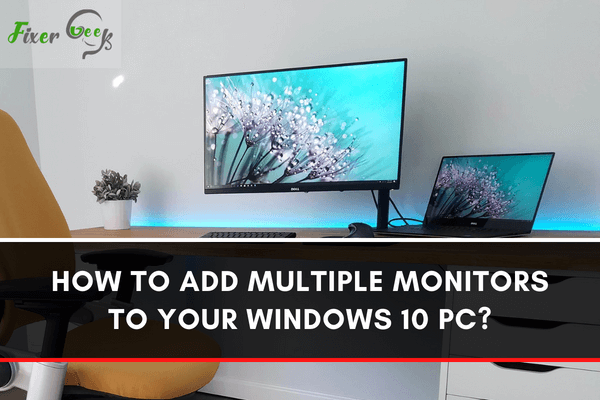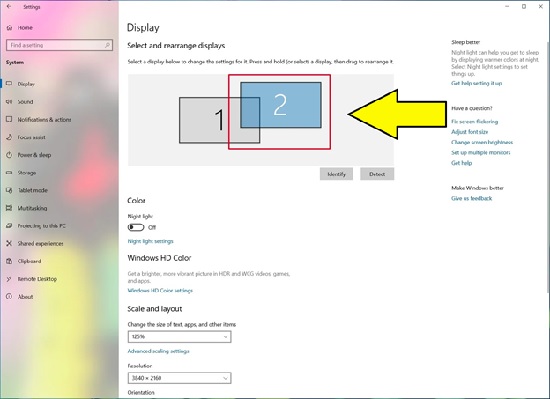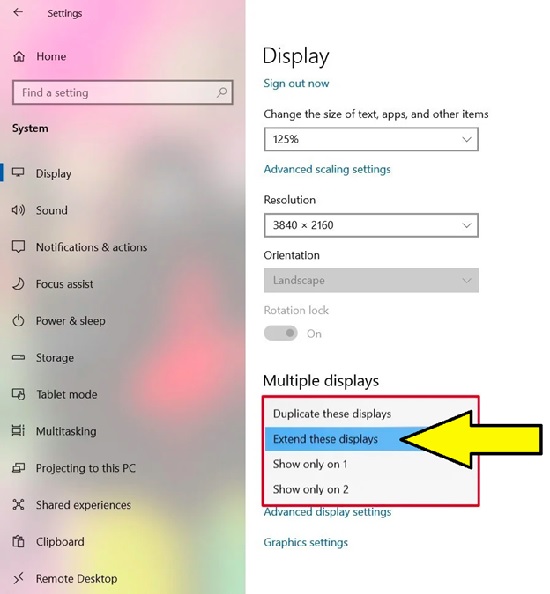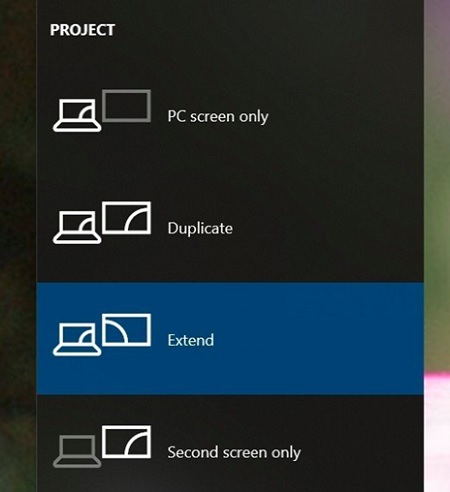Do you have a Windows 10 PC and would like to add some more displays to the system? Do you want the displays to be used with high graphics programs like your favorite game or a graphics editing software? This guide will show you how to add multiple monitors to your Windows 10 PC without any special configurations.

There will be instances that you need multiple viewing devices. Those situations can be when you are doing a presentation through the projector or a TV or doing various tasks on a computer without the inconveniences of switching window screens. Adding and viewing on multiple monitors or viewing devices is easy with the following steps.
Methods on How To Add Multiple Monitors In Windows 10
Rearranging Multiple Displays
Before you attach another monitor or viewing device, make sure that an order is set. Meaning, you have established, which is the primary monitor and which are just extensions. Here's how to rearrange:
- Open the 'Settings' tool.
- Click 'System.'
- Click 'Display.'
- Under the section 'Select and rearrange displays,' drag each display and drop to rearrange according to the computer's Desktop screen's layout. Upon rearranging the monitors, make sure they are all aligned at the top. Otherwise, there might be problems in moving the cursor between monitors.

- Click 'Apply.'
- Once completed, Windows 10 will save the layout for future usage without issues.
- If in doubt, when selecting a monitor, click 'Identify' to figure out. To check the reception of the external monitors, click 'Detect.'
Selecting Viewing Mode For Multiple Displays
When you have an additional monitor, you can have options on your viewing mode. Here's how to select either of them:
- Open the 'Settings' tool.
- Click 'System.'
- Click 'Display.'
- Under the section 'Select and rearrange displays,' choose the monitor to be adjusted.
- Under the section' Multiple displays', click the drop-down menu to choose the viewing mode:
a). Duplicate desktop — All monitors have the same display.
b). Extend — Secondary monitor is an extension for primary display.
c). Disconnect this display — Any selected monitor will be turned off.
- After completion, you can repeat setting the viewing mode for other monitors. Note that through this, you can choose which monitor is the primary.
Shortcut For Switching Viewing Modes
When you don't want to explore the Settings directory, you can try the keyboard shortcut to utilize the 'Project' feature.
- Press the 'Windows' key and letter 'P' at the same time on your keyboard. The 'Project' menu will be displayed.

- Choose one of the options to achieve your desired viewing setup:
a). PC screen only = when you want your display on your primary screen only.
b). Duplicate = replicate all the display from your primary to others.
c). Extend = ideal for multi-monitor set-up.
d). Second screen only = if you want to conserve the energy of the primary screen.
Managing Advanced Display Settings
Modification of the 'Advanced Display Settings' is not always recommended. But since all monitors are not created equal, you might need to make adjustments sometimes to remove the screen flickering (by changing the refresh rate) and improve the color accuracy (by customizing the color profile).
If you have a general understanding of the technicalities of the settings, you may proceed in adjusting. However, if you don't have any idea and are content with just extending your computer display, don't proceed and stick with the default settings.
Summary: Add multiple monitors to your Windows 10 PC
- Prepare your PC and your workspace.
- Connect the first monitor.
- Turn on the monitor you just connected.
- Connect the second monitor to your PC.
- Turn on the second monitor.
- Change to a dual-monitor setup from a multiple-monitor setup.
- Use multiple monitors with different display settings.
- You can add any number of monitors up to 10, in addition to Surface Hub, so everyone can be more productive at once.
Conclusion
Knowing how to manipulate the viewing modes can be advantageous to you, especially when you are in a formal presentation. Aside from changing views, do not forget to consider the connectors' physical state also, whether VGA, DVI, or HDMI. The connectors can make the viewing expansion a success or a failure right away.